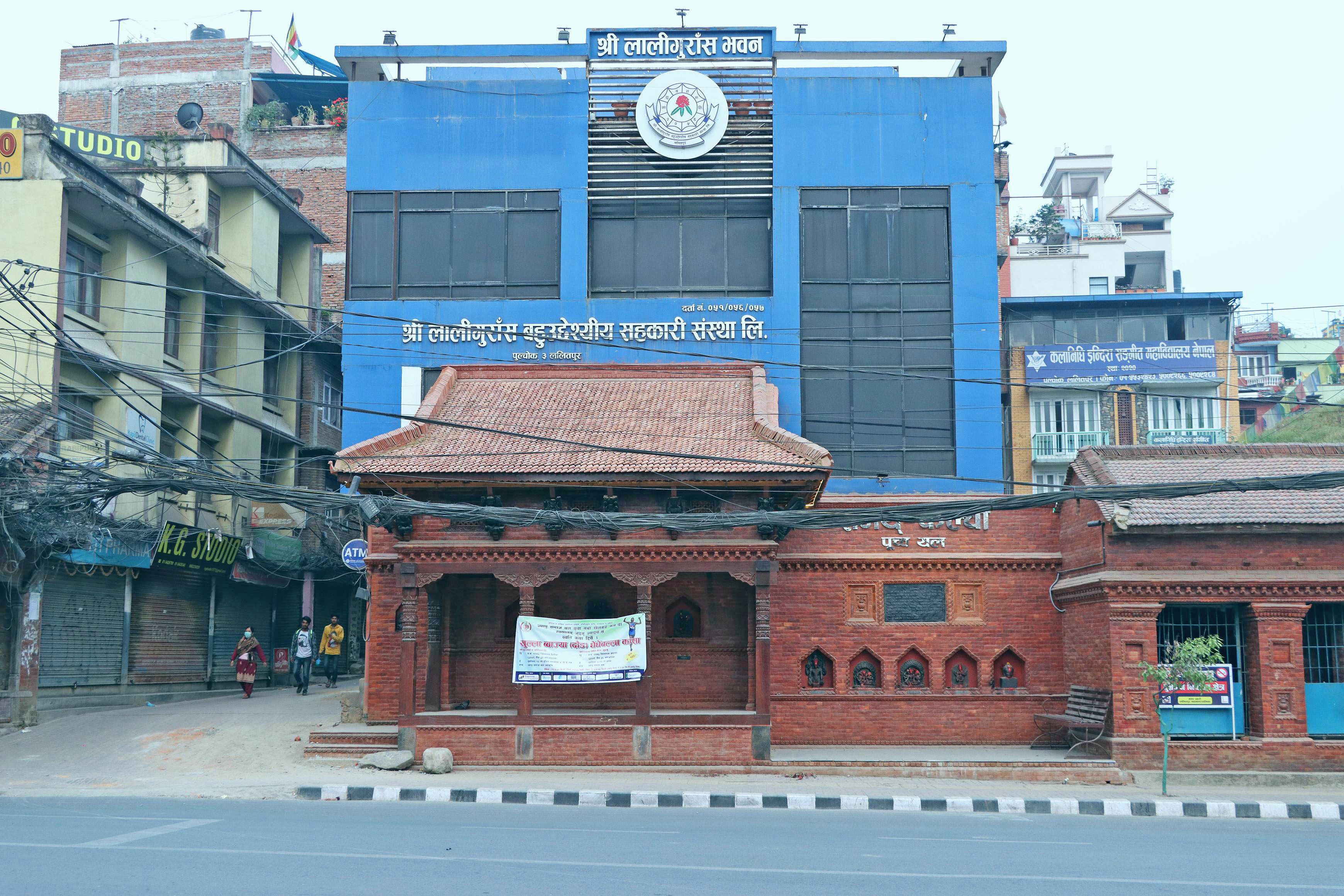Samay Phalcā, Pulchok, Patan
Curated by Julia Meckl and Rajendra Shakya

The newly reconstructed Samay Phalcā is a remarkable sight: a phalcā attached to the blue façade of the Laligurans Bank, next to Aśoka Stupā West and facing Pulchowk Road, one of the main traffic arteries of Lalitpur. This three-bayed Phalcā is decorated with carved columns, capitals and struts. It features images of Gods and Goddesses in nine wall niches, and the name of the Phalcā is written in shiny letters on the wall and it is illuminated at night. Elements from different periods of time converge at this site, which until recently was the subject of a longstanding legal dispute. After two decades of lawsuits filed at multiple courts, mainly by shareholders of Shree Laligurans Multipurpose Co-Operative Ltd. and the Lalitpur Metropolitan City government, against and for its reconstruction, the rebuilt Samay Phalcā was inaugurated on March 19, 2022.
Local elders recall that the initial Phalcā was dismantled in 1972 to “beautify” the area along the road because thethen King Vīrendra was supposed to use this road along with a foreign dignitary on their way to Godavari. However, it can be seen intact in photographs by Carl Pruscha, probably taken between 1973-75. Thus it can be assumed that it may have been dismantled only in the mid-1970s. Residents of Pulchowk also remember that Samay Phalcā was temporally used as a police station in the 1960s. During this period, the Phalcā’s bays had been walled-up. Samay Phalcā derives its name from the samaybaji (a set of food items unique to the Newars) that used to be distributed there during Indrajātrā by resident Maharjana (Jyāpu) and Malekū (Śreṣṭha) communities. The name was given to the Phalcā for reference in court, before thatit was not known under a specific name.
In the early 2000s, a committee was already formed by residents of Pulchowk to undertake reconstruction with the support of the city of Lalitpur. However, due to the legal disputes that followed, the foundation stone was laid only two decades later, on August 19, 2021. The process continued to be interrupted until its completion in March 2022. The city ultimately won the case by presenting photographs of the Phalcā from the 1960s and 1970s as evidence in court. At the inauguration ceremony, Mayor of Lalitpur Chiri Babu Maharjan, unveiled a newly installed inscription. The whereabouts or existence of an older inscription remain unclear, as does the date when the original Phalcā was constructed.
The rebuilt Phalcā looks quite different from the historical pictures. The carved struts and statues used in the reconstruction, which had been temporally stored in the nearby police station, are said to come from the original Phalcā. An interesting detail about the rebuilt Phalcā is that it is directly attached to the front of the bank, thereby blocking the bank’s main entry.
Samay Phalcā stands out as a particularly interesting example of community engagement in heritage, of obstacles and disputes in the reconstruction processes, and of place-making in the context of massive urban transformations that the Pulchowk area has seen in the last four decades.
For more information about Samay Phalcā, please visit DANAM.
